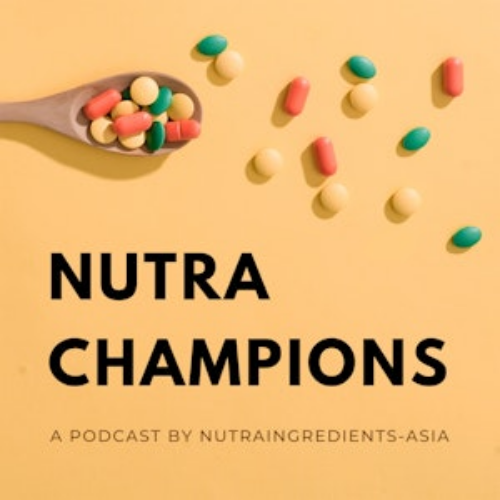‘No hidden messages’: Taiwan seeks to tighten nutritional labelling regulations for all packaged foods

The Taiwan Food and Drug Administration (FDA) published a list or proposed amendments to be made to regulations governing all packaged foods in the country, under the purview of the Ministry of Health and Welfare.
“One of the main objectives of these amendments are to ensure compliance that nutritional labelling and claims are suitable such that consumers will obtain appropriate amounts of nutrition [from the food and beverage products], as it is important that the phrasing and vocabulary used on the product labelling is accurate,” said the FDA via its formal statement.
“As such, new amendments have been added to the draft regulations to define nutritional claims and vocabulary usage, which will serve to disallow the usage of hidden or implied messaging that a product has nutritional or caloric benefits that it does not in fact possess.
“[This also covers] preventing the overconsumption of nutrients and minerals which would lead to public health issues e.g. regarding calories, saturated fats, cholesterol, sugar; [and the promotion of] nutrients and minerals which consumers might lack e.g. vitamins A, B, C, E, calcium and iron.”
For products high in nutrients which the agency hopes to reduce public consumption of such as saturated fats and sugar, manufacturers need to label these as ‘consume in moderate/suitable amounts’, whereas others containing high amounts of vitamin A and calcium need to label these as ‘possible to be consumed in supplementary amounts’.
“The new amendments will require manufacturers to include information regarding product calories and nutrition in quantifiable forms, using the unit of measurement that is used to quantify the product itself,” added the FDA.
“For instance, solid packaged food products that wish to include a ‘sugar-free’, ‘no-sugar’, ‘zero-sugar’ or equivalent claim will now need to include the amount of sugar per 100g of product [such that consumers will be able to make easy comparisons, not sugar per 100ml or 1L] on the label.
“Similarly, if a manufacturer wishes to include a ‘high-fibre’, ‘extra fibre’, ‘rich in fibre’ or any equivalent claim for a liquid packaged beverage product, it will need to include the amount of fibre per 100g on the label, and make sure these adhere to current nutritional standards and guidelines.”
‘Zero’ or ‘free’ nutrient claims will need to contain no more than four calories, 0.5g fat, 0.1g saturated fat, 0.3g trans fat, 5mg cholesterol, 5mg sodium, or 0.5g sugar per 100g or 100ml. ‘Reduced’ claims will need to contain no more than 40 calories, 3g fat, 1.5g saturated fat, 20mg cholesterol, 120mg sodium or 5g sugar for 100g of solid products, whereas values for all items except sodium need to be halved for 100ml of liquid products.
Conversely, ‘high’ or ‘extra’ claims will need to contain at least 6g fibre, 210 µg Vitamin A, 0.42mg Vitamin B1, 0.48mg Vitamin B2, 30mg Vitamin C, 3.9mg Vitamin E, 360mg calcium or 4.5g iron per 100g of solid product. Values for 100ml liquid product are halved, and different numbers apply for infants and pregnant consumers.
“As for powdered products that are dissolved in water for consumption such as coffee or fruit juice powders in sachets, the unit of measurement to be used is according to the product in its liquid form when water is added according to the usage directions,” added the FDA.
“For items where water is added but will not dissolve such as tea, the amount of nutrients/calories per 100ml of liquid will be taken into account.”
According to the agency, the amendments are scheduled to start coming into force in phases from January 2023.
Items subject to tougher declarations
Certain products are also subject to somewhat tougher regulations if intending to make claims, many of these products that have conventionally been considered ‘unhealthy’ for high salt, sugar or fat levels.
“Producers of cheeses, cheese powder, cream, [processed meat and fish products], peanut butters, jams. Western-style bakery products and Chinese-style bakery such as biscuits will need to declare the amount of all nutrients in the product per 30g instead of 100g if they wish to make any claims regarding nutrients to be consumed in extra or supplementary amounts such as vitamins or fibre,” said the FDA.
“In addition, certain food and beverage products such as rice crackers, bean-based products, soft drinks with sugar content that makes up over 10% of their calorie count, most sweets and chocolates, most flavourings and sauces as well as pickled or marinated vegetables will not be allowed to make ‘high in’, ‘extra’, ‘rich in’ etc. claims.”
That said, the FDA has also proposed to remove clauses for ‘all other food and beverage products as deemed appropriate by the central authority’ to be included under these tougher categories – which could in its turn spell good news for manufacturers not in these categories as would now be less risk of falling afoul of the new regulations.
The draft regulations are available for public comment until December 13 2021.











